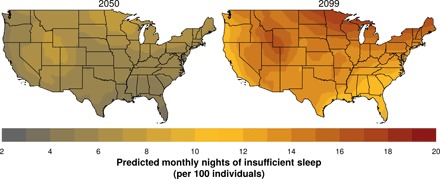Fig. 4. Geographic dispersion of the predicted effects of climate change–induced nighttime warming on human sleep.

This figure presents the 25-km × 25-km grid cell forecasts of the potential impact of nighttime warming on monthly nights of insufficient sleep per 100 individuals. Downscaled climatic model data are averaged across the 21 models in the ensemble and then coupled with our historical model parameter β to produce an estimated change in insufficient sleep in each geographic location for the periods of 2050 and 2099. Areas of the western and northern United States—where nighttime temperatures are projected to increase most acutely—may experience the largest future changes in sleep.
